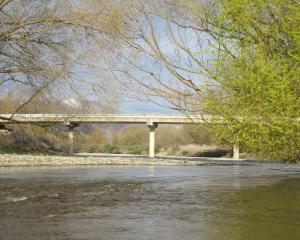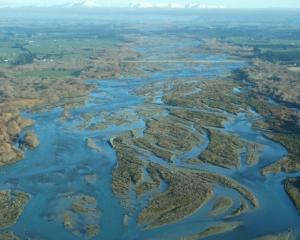Otago waterways with excellent water quality could be degraded under the Otago Regional Council's proposed changes, environmental organisations fear.
There was a risk the 6A plan's objectives of maintaining good water quality would not be met if water bodies with water quality far better than the proposed changes were allowed to be degraded "up to the standards", Forest and Bird Otago-Southland field officer Sue Maturin told the 16th day of hearings in Dunedin yesterday.
While supporting the council's approach, it was concerned its success was entirely dependent on the council carrying out extensive and regular spot monitoring.
Forest and Bird wanted an objective in the plan for the council to regularly monitor water quality and take action whenever water quality standards were not met.
"The community needs certainty that the revolutionary approach proposed by the council will effectively lead to Otago having good and excellent water quality everywhere."
Otago Fish and Game Council environmental officer Peter Wilson said it was concerned under the proposed permitted activity rule there would be no ability for the significant costs of compliance to be born by the applicant.
"The lack of direction and methodology for compliance is the biggest flaw with this approach, and if it is not addressed, the philosophy behind this plan change risks failing."
Also, while all resource consents were public information, under permitted-activity rules any information provided by landowners might not be.
"If private nutrients are polluting public waterways, then knowledge of this needs to be made public."
A critical omission from the plan was the macroinvertebrate community index for measuring the health of invertebrates and their habitat.
The Department of Conservation withdrew its request for the region to be divided into two zones to protect the significant habitat of indigenous fauna - mostly the spawning habitat of freshwater fish species.
Doc freshwater ranger Pete Ravenscroft said while he had not observed localised extinction of non-migratory galaxiids because of poor water quality, he had observed severe impacts in Narrowdale Creek, tributaries of Lake Mahinerangi, the Waitahuna River and at numerous whitebait spawning sites.
"The fragile nature of a number of the remaining populations suggests we should be cautious about added pressures coming from results of land-use practices".
Southland-Otago resource planner for Doc, Ken Murray, said the plan change was fundamentally dependent on effective monitoring and a new objective was needed to allow for this.
In Southland, Environment Southland had permanent continuous oxygen monitoring at two sites which provided immediate information on breaches of water quality, while there were gaps in the Otago council's State of the Environment water quality monitoring.
Along with Forest and Bird, Doc wanted the word "water bodies" used, rather than lakes and rivers, as it excluded aquifers, wetlands and contiguous coastal water which also needed protection, he said.
There were concerns the plan's prohibited rules did not capture odourless, colourless toxins being discharged into water adversely affecting aquatic life.
The hearing continues today in Dunedin.
Day 16
Where: Dunedin.
Panel: Councillors Duncan Butcher (chairman), David Shepherd and independent member Clive Geddes.
Proposal: Changes to Otago's water regulations to prevent run-off in rural areas polluting the region's waterways.
Submitters: Forest and Bird, Otago Fish and Game Council environmental officer Peter Wilson and Central South Island Fish and Game Council resource officer Zella Smith, Department of Conservation counsel Pene Williams, freshwater ranger Pete Ravenscroft, resource planner Ken Murray; Horticulture New Zealand natural resources and environment manager Chris Keenan, consultant Lynette Wharf and Summerfruit New Zealand board member Earnscy Weaver.
Quote of day: "I don't want to see this plan change scuppered give it a go" - Doc resource planner Ken Murray
Advertisement





